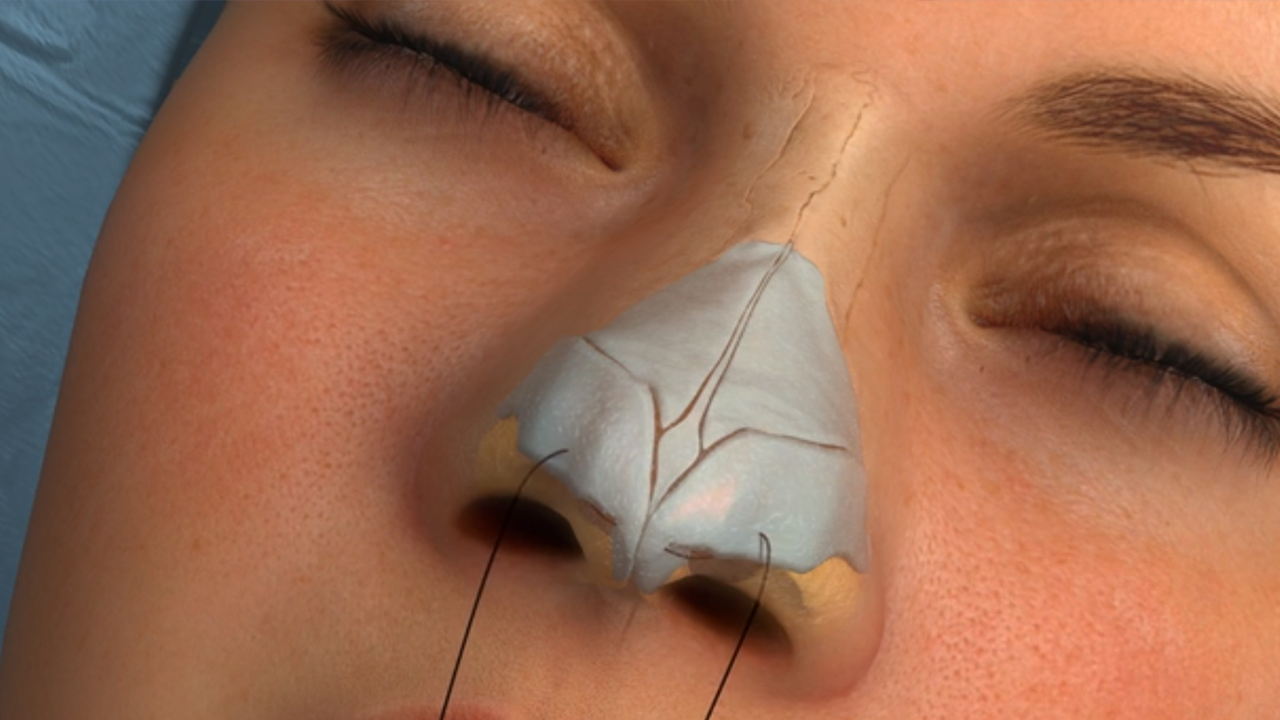Better Breathing through Plastic Surgery
It’s hard to argue that the nose is the most prominent feature on the face. And let’s face it – not everyone is crazy about theirs.
Perhaps you’re not comfortable with the appearance of your nose. Maybe you feel it’s too prominent in that it’s very large or it has a strange shape. Whatever your reason for feeling dissatisfaction with its appearance, plastic surgery can remedy that.
But did you know that you can also achieve better breathing through plastic surgery?

The Dual Function of Rhinoplasty
Rhinoplasty, known as nose reshaping or, more colloquially, as a “nose job,” ranked among the leading cosmetic surgical procedures in the U.S. in 2018.
In fact, according to the American Society of Plastic Surgeons, more than 213,000 people elected to have a rhinoplasty procedure – coming in third behind only breast augmentation and liposuction.
And it’s no wonder. Not only can rhinoplasty improve the appearance of the nose, but it can also improve its function thereby providing relief for those who suffer from breathing problems. And it’s an outpatient procedure that generally takes 1.5 to 3 hours to complete.
When rhinoplasties are performed for correcting documented breathing, this is known as functional rhinoplasty. Also, when performing a cosmetic rhinoplasty, function is still a priority to maintain or improve.
Functional Rhinoplasty
With functional rhinoplasty, the main intention of the procedure does not focus on changing the appearance of the nose but rather aims to improve breathing. Even so, the best plastic surgeons are aware that the form and function of the nose are intimately linked.
In other words, improved breathing doesn’t come at a cost of decreased appearance. So it’s important to carefully select a highly-trained and board-certified plastic surgeon to achieve the best results.
Some of the medical conditions that could potentially be corrected with rhinoplasty include the following:
- Swollen or Enlarged Turbinates
You’ve probably never heard of turbinates. Made primarily of nasal mucosa, think of them as the humidifiers of the nose.
The turbinates periodically swell in response to the environment. For example, during allergy season or when you lie on one side of your body and it becomes difficult to breathe through the nostril closest to the pillow.
For some, however, chronic enlargement of the turbinates results in nasal obstruction that may require surgery.
- Sleep Apnea
Sleep apnea may be the result of palate abnormalities, obesity, or nasal obstruction. Those with this condition are unable to get normal airflow and actually stop breathing for short periods of time.
Not only does this cause snoring, but the sufferer is subject to dangerous oxygen deprivation while they sleep. Functional rhinoplasty aims to remedy this situation by reshaping the external and internal valves to allow for normal airflow.
- Narrowing or Collapse of Middle Vault
If you’re familiar with the Breathe Right nasal strip, then you know its purpose is to hold nasal passages open to allow for fuller breathing. It was developed because some people suffer from weakness of the middle vault or side walls of the nose. When they deeply inhale, the side walls “collapse” inward.
Functional rhinoplasty repairs the internal nasal valves to prevent the nasal side walls from collapsing upon inhalation.
- Deviated Septum
The bone and cartilage that divide the space between your nostrils is known as the septum. A “deviation” is a bend of the septum.
To be honest, the septum is rarely perfectly straight for anyone. But when it bends significantly to one side or the other, it can block the air passage on one or both sides, making it difficult to breathe. This condition can also increase the risk for sinus infections due to poor drainage. Deviated septum also contributes to an asymmetric or crooked nose.
In the case of a deviated septum, a rhinoplasty along with a septoplasty is typically performed to straighten that bone and cartilage. The septum is repositioned to the middle of the nose. Portions of the septum may be used to augment the nose or narrow the tip.
To do this, the surgeon may need to cut and remove parts of the nasal septum before reinserting them in the proper position. But once a septoplasty is healed, the patient usually finds that it’s easier to breathe.
- Birth Defects
Some people are born with congenital malformations of the nose. These can include nasal masses, bony obstructions, tumors or cysts. Functional rhinoplasty can correct these conditions. In severe cases, such as when babies are born without a nasal septum, septoplasty is incorporated as well.
Overall Health Benefits of Better Breathing
Aside from the peaceful feeling that comes from taking deep breaths, the ability to fully respirate has many health benefits you may not have considered.
For example, not struggling to breathe results in lower blood pressure. It also improves exercise tolerance.
And, of course, better breathing leads to improved sleep. With improved sleep comes a reduced risk of cardiovascular disease, less lethargy, and more energy. Poor sleep also activates the fight response which decreases metabolism.
So it turns out that improving one’s sleep through clearer breathing can even help to reduce the production of stress hormones and help with weight loss and lowering blood pressure!
Could You Achieve Better Breathing through Plastic Surgery?
If the source of your breathing issues is a malformation of or obstruction in your nose, you could just achieve better breathing through plastic surgery.
Functional rhinoplasty and/or septoplasty can open those airways while also providing any desired aesthetic change to the shape of your nose. It really is a win-win.
So contact us today for a free consultation with one of our highly skilled plastic surgeons. You’ll breathe easy knowing you’re getting the best possible care.














